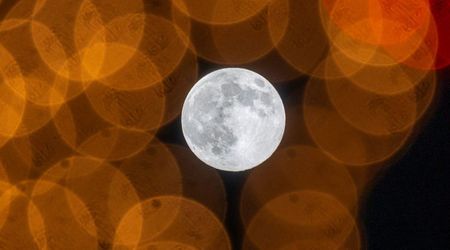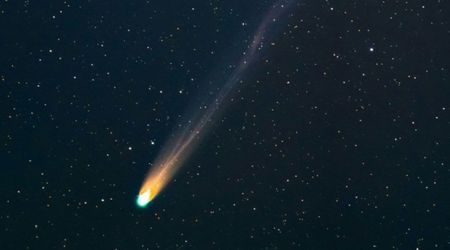Crater Lake in Oregon named the best national park in the U.S. for stargazing

Oregon, home to the world's largest dark sky sanctuary, boasts the top spot for stargazing among US national parks. Crater Lake National Park, located in southern Oregon, earned this distinction after a study by vacation rental site Lake.com. The study analyzed data from the National Park Service's night sky data collection sites to identify the top 20 best US national parks for stargazing, with Crater Lake emerging as the undisputed leader, according to the Statesman Journal.

Crater Lake is famously known as the deepest lake in the United States, but its allure extends beyond its profound depths. It has also cemented its reputation as an exceptional destination for stargazers, offering unparalleled views of the night sky. The park's remarkable clarity and minimal light pollution are key factors contributing to this recognition. A comprehensive study awarded Crater Lake a perfect 100 index score for stargazing.

This impressive rating is attributed to the fact that, on average, a staggering 98.6% of stars are visible across Crater Lake's four data collection sites. Furthermore, the park boasts an incredibly low average light pollution ratio of just 0.03, ensuring that the natural brilliance of the cosmos is largely unobstructed, creating a truly immersive stargazing experience. Great Basin National Park in Nevada emerged as the closest contender, though still notably behind Crater Lake's perfect score. It achieved a respectable 88.58 index score for stargazing. This was based on a strong 97.8% star visibility and a slightly higher, yet still impressively low, average light pollution ratio of 0.04.

To pinpoint the best national parks for stargazing, Lake.com researchers meticulously analyzed information from National Park Service night sky data collection sites. Their methodology involved evaluating two key metrics: the percentage of visible stars and the median light pollution ratio for each park. This information was then used to create a comprehensive 100-point scale, which ultimately determined the rankings based on the average percentage of visible stars and the average median light pollution. For those planning to experience the celestial wonder of Crater Lake National Park, it's important to note that an entrance fee or a valid National Park Service pass is required for entry. These fees and passes can be conveniently purchased in advance online or at any of the park's entrance stations upon arrival, as advised by the National Park Service.
While Crater Lake offers unparalleled views of our galaxy, the year 2025 promises spectacular celestial events that stargazers won't want to miss. As we approach the peak of the Sun's 11-year solar cycle, we anticipate intense geomagnetic storms that could ignite vibrant auroras. Though there's a chance these dazzling light shows might extend to the US and Europe, your best bet for a truly unforgettable display in over a decade will be in high-altitude regions such as Alaska, Iceland, and northern parts of Norway, Finland, and Sweden, as per Forbes.

Even if you're not chasing the aurora, 2025 provides numerous opportunities to witness incredible astronomical phenomena. On August 12, Venus and Jupiter will stage a remarkable celestial conjunction, appearing a mere one degree apart in the pre-dawn sky, their combined brilliance creating a captivating display. Saturn reaches opposition on September 21, dominating the night sky with its iconic rings visible through a telescope. The Draconid Meteor Shower, peaking on October 8-9, offers a unique early evening viewing opportunity. November 5 brings the biggest supermoon of 2025, the moon's closest approach since 2019, promising a breathtaking sight at moonrise. Lastly, the Leonid Meteor shower on November 17-18 is expected to deliver about 15 meteors per hour under excellent dark sky conditions.









